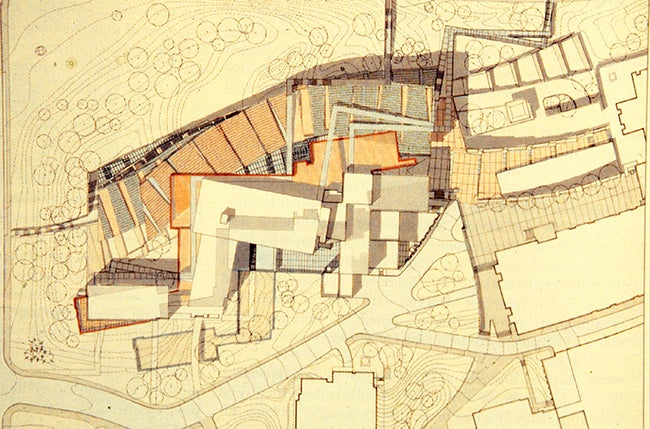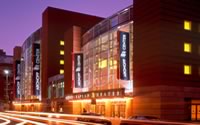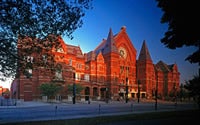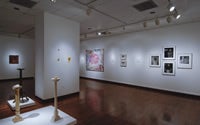
Foundation: The First Year
-
DateFEB. 27 - MAR. 15, 2015
-
VenueWeston Art Gallery
-
LocationEast and West Galleries
-
EXHIBITION SPONSOR(s):
TBD
EXHIBITION CO-SPONSOR(s):
TBD
Exhibition Details
Foundation is a special exhibition at the Weston Art Gallery of selected work highlighting the extraordinary talent of first-year undergraduate students at the University of Cincinnati’s College of Design, Architecture, Art, and Planning (DAAP). The first-year programs revolve around designing with constraint, composition, and skill in a simple vocabulary iterated for a holistic understanding of the complex formal language of “making.” Solving a design problem multiple times in both 2- and 3-D allows for a number of resultant works and stresses questions rather than answers. Organized by Joe Girandola, Associate Professor and Director of Graduate Studies DAAP (School of Art), and Vincent Sansalone, Assistant Professor DAAP (School of Architecture), Foundation will be juried by a panel including Dennis Harrington, Director of the Weston Art Gallery, and Alice Gray Stites, Vice President/Museum Director of 21c Museum Hotels.
Foundation Didactic Panel
The first year at the College of Design, Architecture, Art, and Planning (DAAP) at the University of Cincinnati is a diverse foundation with separate pedagogical and curricular focuses, but all with a clear desire to educate. The first-year faculty teach approximately 450 students the processes of educating oneself in both making and applied visual thinking, all within the historically essential elements of the visual and plastic arts.
Following in the rigorous tradition of the Bauhaus and Black Mountain, the foundations program aspires to trans-disciplinary thinking. Accordingly, students go beyond representation, both in theory and practice. Instructed and guided in their journey, the students develop a deep understanding of the presentation of the actual. Focus is placed on teaching critical thinking rather than just researching, regurgitating, and imitating the work of the masters. This requires that they investigate and question, but with a twist, i.e., Mies with a touch of Josef Albers, through the lens of Sol Lewitt, in conversation with Donald Judd, from the perspective of Rachal Whiteread, and on the stage of David Lynch (with Martha Graham).
This demanding pedagogy is rooted in active spatial construction, a comparative practice that crosses the boundaries of two- and three-dimensional design disciplines. First-year students learn core principles, but more importantly, they learn to question and transgress the traditional. The curriculum places a heavy emphasis on self-awareness. In other words, it requires students’ constant consideration and incorporation of physical scale—the set of physical qualities, and quantities of information that characterize motor, sensory, social, and mental capabilities. Over the course of the semester, the program(s) unfolds in a series of projects developed to teach the principles of composition, form, and materiality through an acute understanding of the hand and making via iteration, craft, scale, and questioning.
The first-year program(s) also revolves around design constraints which reduce spatial language to its simple vocabulary, iterated for unabridged understanding of the complex, formal language of design. This repetition of making and the subsequent juxtaposition of a number of resultant works, stress design questioning instead of design answers. Within this context, the work takes on multiple forms: the object, the documentation of the object, and the quintessence of process.
The first-year faculty, a merry band of full-time professors, adjuncts, and grad assistants, reject passive, “talk at you,” lecture-style teaching. Rather, on all levels we embrace dynamic practices and kinesthetic engagement. Knowledge is disseminated in a process similar to the solo in free jazz: an improvised style characterized by the absence of set timing or chord patterns. The “lecture,” as improvisational solo, is expressed in the vein of John Coltrane’s performance in Ascension, with the sound of Eddie Floyd; while the band, or in our case, the first-year faculty, carries the form of the work.
Vincent Sansalone


